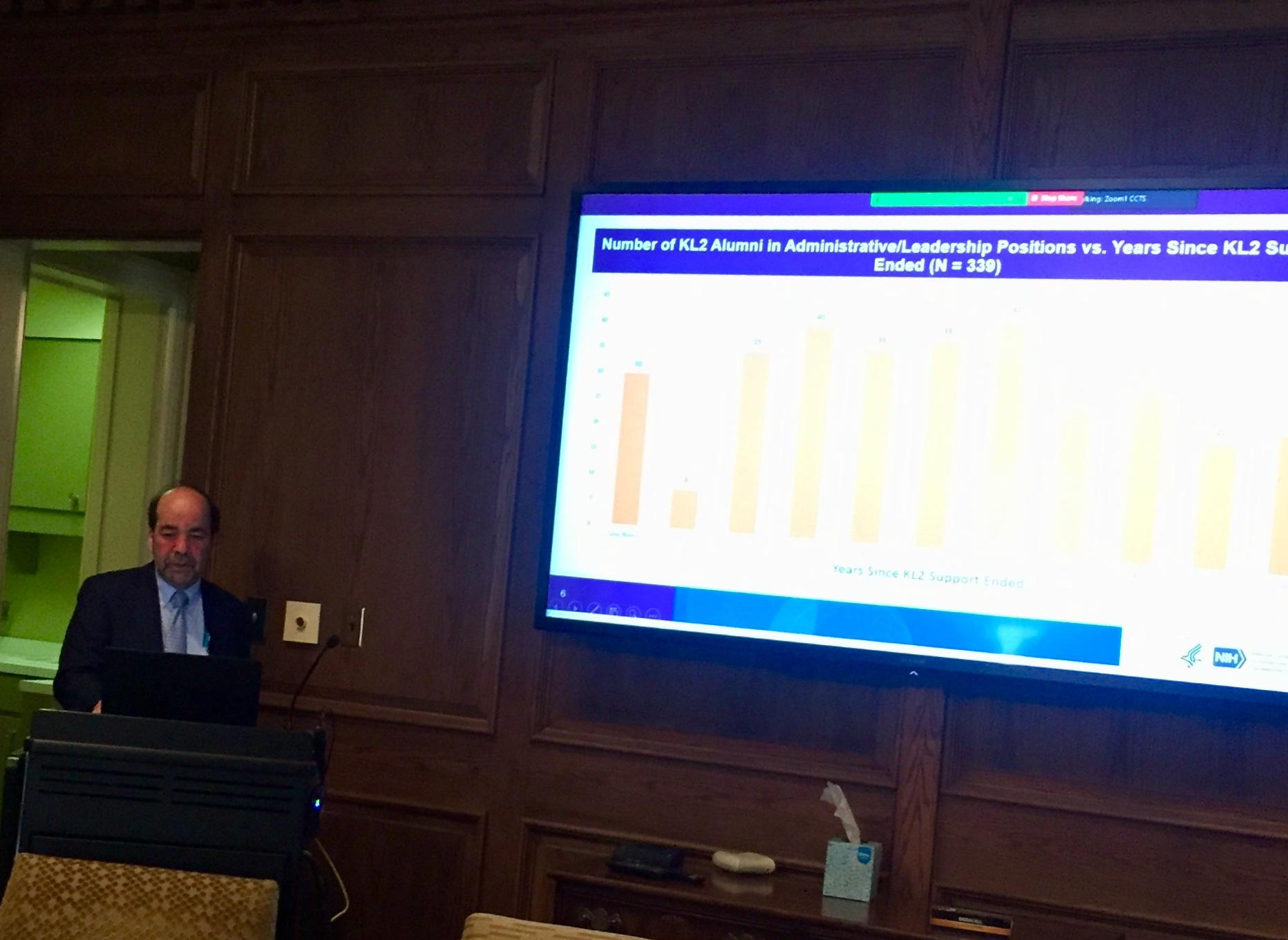
Dr. Joel Tsevat, Director of the Institutional Clinical and Translational Science Award (CTSA) KL2 program at The University of Texas (UT) Health Science Center, Director of the Center for Research to Advance Community Health (ReACH), and Professor of Population Health and Medicine at UT Austin Dell Medical School, shared findings from a national survey of KL2 alumni at our March CCTS Forum. The standing room only crowd included many early stage investigators curious to know more about the benefits of becoming a KL2 scholar.
Demographics
The survey went to ~1800 former KL2s, with 756 responding, representing every stage of translational research. The median time on a KL2 was 2 years (range 1-5 years), and the median time since KL2 support had ended was 4 years (range <1-10 years). More than half of the respondents were female and 23% were from underrepresented minorities. Of the 80% who had become assistant or associate professors, nearly half reported having an administrative or leadership role.
Findings
The survey results indicate becoming a KL2 scholar positively impacts one’s career progression and opens the door to a wide array of training and research opportunities, with protected time the most highly valued. Respondents also reported high levels of intrinsic measures of success, such as meaningful work (more than 93% agreed or strongly agreed). Most felt the program enabled them to have an impact on their research goals, including changing the paradigm in understanding the pathophysiology of a disease; developing or disseminating a novel methodology with impact on human health; and influencing health policy or clinical guidelines.
Below we share additional highlights from the survey.
Funding Success: More than 47% reported their salary was supported by grant funding, followed by clinical activities, institutional funds, and teaching. Only 15% (115) indicated they have zero grant funding. More than 80% applied for extramural grant funding during their KL2, with a roughly equal number most successfully targeting a K, VA or foundation grant mechanisms. Between 13-15% reported having an R01, R21, or R03.
Training Opportunities: Many of the respondents took advantage of learning opportunities while in their program, especially the mentorship (formal and peer) that is a hallmark of the KL2. Research collaborations, as well as didactic training in clinical and translational competencies, grant writing groups, mock reviews, and Individual Development Plans (IDPs), were also frequently utilized.
Caveats
The survey results offer a glimpse into the relationship between the KL2 and success in clinical and translational research. But Tsevat cautioned attendees that the survey results may not be generalizable to all KL2s. The analysis also did not take into account how variables such as length of KL2 award (2 years vs 5) and look-back period (<1 year vs 10 years) may have influenced scholar outcomes.
Even with the strong foundation that a KL2 provides, a high percentage of respondents reported it is challenging or very challenging to be a clinician or teacher and a researcher. “Individuals need to look in the mirror and decide if they need more support for training or if they are ready to strike out for an R01 on their own,” Tsevat concluded.
If you are a junior faculty member with a passion for translational research, visit our CCTS Deep South Mentored Career Development (KL2) program page to learn more.
A pdf of Dr. Tsevat’s slide deck is available on the CCTS Monthly Forum page. To watch his talk, visit the CCTS YouTube channel.